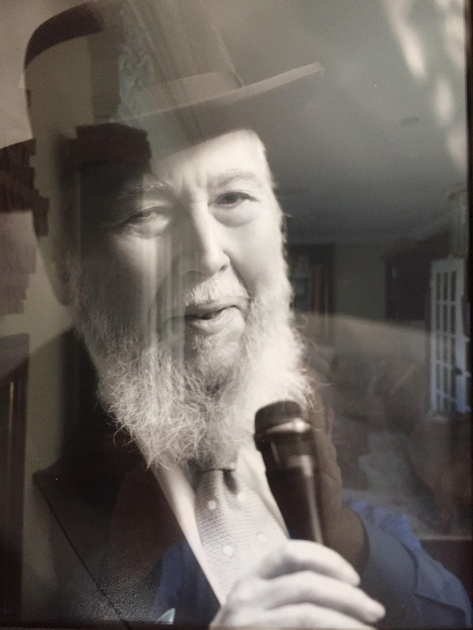
As this Gemara addresses the eating habits and needs of different animals I thought to share a lovely aggadah about Dovid Hamelech and leadership.
for Video Shiur click here to listen: Psychology of the DAF Shabbos 155
ū×ūōū©ū® ū¬ūöūÖū£ūÖūØ ūóū┤ūŚ
ūĢūÖūæū¤ ūøū×ūĢ ū©ū×ūÖūØ ū×ū¦ūōū®ūĢ. ūøū®ūöūÖūö ūōūĢūō ū©ūĢūóūö ūÉū¬ ū”ūÉū¤ ūÉūæūÖūĢ. ūæū×ū¢ū×ūĢū© ūø"ūæ. ū£ūøūÜ ūĢūÖūæū¤ ūøū×ūĢ ū©ū×ūÖūØ ū×ū¦ūōū®ūĢ. ūĢūÖūæūŚū© ūæūōūĢūō ūóūæūōūĢ ūĢūÖū¦ūŚūöūĢ ū×ū×ūøū£ūÉūĢū¬ ū”ūÉū¤. ūÉ"ū© ūÖūöūĢū®ūó ūöūøūöū¤ ū×ūö ū×ū×ūøū£ūÉūĢū¬ ū”ūÉū¤ ū®ūöūÖūö ūōūĢūō ūøūĢū£ūö ūÉū£ūĢ ū×ūżūĀūÖ ūÉū£ūĢ ū×ūĢū”ūÖūÉ ūÉū¬ ūöūÆūōūÖūÖūØ ūĢū×ūÉūøūÖū£ū¤ ū©ūÉū®ūÖ ūóū®ūæūÖūØ ūĢū×ūĢū”ūÖūÉ ūÉū¬ ūöū¬ūÖūÖū®ūÖūØ ūĢū×ūÉūøūÖū£ū¤ ūÉū×ū”ūóū¤ ū®ū£ ūóū®ūæūÖūØ ūĢū×ūĢū”ūÖūÉ ūÉū¬ ūöū¢ū¦ūĀūĢū¬ ūĢū×ūÉūøūÖū£ū¤ ūóūÖū¦ū©ū¤ ū®ū£ ūóū®ūæūÖūØ. ūÉū×ū© ūöū¦ūæ"ūö ūöūĢūÉūÖū£ ūĢūÖūĢūōūó (ū£ū©ūÉūĢū¬) [ū£ū©ūóūĢū¬] ū”ūÉū¤ ūÖū©ūóūö ūÉū¬ ū”ūÉūĀūÖ ūÉū£ūĢ ūÖū®ū©ūÉū£ ū®ūĀūÉū×ū© (ūÖūŚū¢ū¦ūÉū£ ū£ūō ū£ūÉ) ūĢūÉū¬ūĀūö ū”ūÉūĀūÖ ū”ūÉū¤ ū×ū©ūóūÖū¬ūÖ:
A good leader knows what his flock needs and adjusts the playing field to be not too hard and not to easy. Animals need to graze and chew to stay healthy but the challenge has to be right.
In child development there is a concept called Zone of proximal development and scaffolding.
The zone of proximal development, often abbreviated as ZPD (zona blizhaishego razvitiia, in original Russian), is best understood as the zone of the closest, most immediate psychological development of learners that includes a wide range of their emotional, cognitive, and volitional psychological processes. In contemporary educational research and practice, though, it is often interpreted as the distance between what a learner can do without help, and what they can do with support from someone with more knowledge or expertise ("more knowledgeable other"). The concept was introduced, but not fully developed, by psychologist Lev Vygotsky (1896–1934) during the last three years of his life. Vygotsky argued that a child gets involved in a dialogue with the "more knowledgeable other" such as a peer or an adult and gradually, through social interaction and sense-making, develops the ability to solve problems independently and do certain tasks without help. Following Vygotsky, some educators believe that the role of education is to give children experiences that are within their zones of proximal development, thereby encouraging and advancing their individual learning such as skills and strategies.
The concept of the ZPD is widely used to study children's mental development as it relates to educational context. The ZPD concept is seen as a scaffolding, a structure of "support points" for performing an action. This refers to the help or guidance received from an adult or more competent peer to permit the child to work within the ZPD. Although Vygotsky himself never mentioned the term, scaffolding was first developed by Jerome Bruner, David Wood, and Gail Ross, while applying Vygotsky's concept of ZPD to various educational contexts. According to Wass and Golding, giving students the hardest tasks they can do with scaffolding leads to the greatest learning gains.
Scaffolding is a process through which a teacher or a more competent peer helps a student in their ZPD as necessary and tapers off this aid as it becomes unnecessary—much as workers remove a scaffold from a building after they complete construction. "Scaffolding [is] the way the adult guides the child's learning via focused questions and positive interactions." This concept has been further developed by Mercedes Chaves Jaime, Ann Brown, among others. Several instructional programs were developed based on this interpretation of the ZPD, including reciprocal teaching and dynamic assessment. For scaffolding to be effective, one must start at the child's level of knowledge and build from there.
Source: https://en.wikipedia.org/wiki/Zone_of_proximal_development
And this is tied in to the Gemara’s quote from Mishley 29:7:
ūōų╝ų░ū©ųĘū®ūü ū©ųĘūæų╝ų┤ūÖ ūÖūĢų╣ūĀųĖūö ūÉųĘūżų╝ų┤ūÖū¬ų░ūŚųĖūÉ ūōų╝ų░ūæųĄūÖ ūĀų░ū®ūéų┤ūÖūÉųĖūö: ū×ųĘūÉūÖ ūōų╝ų┤ūøų░ū¬ų┤ūÖūæ ū┤ūÖūĢų╣ūōųĄūóųĘ ū”ųĘūōų╝ų┤ūÖū¦ ūōų╝ų┤ūÖū¤ ūōų╝ųĘū£ų╝ų┤ūÖūØū┤ — ūÖūĢų╣ūōųĄūóųĘ ūöųĘū¦ų╝ųĖūōūĢų╣ū®ūü ūæų╝ųĖū©ūĢų╝ūÜų░ ūöūĢų╝ūÉ ūæų╝ųĘūøų╝ųČū£ųČūæ ū®ūüųČū×ų╝ų░ū¢ūĢų╣ūĀūĢų╣ū¬ųĖūÖūĢ ū×ūĢų╝ūóųĖūśų┤ūÖū¤, ū£ų░ūżų┤ūÖūøųĖūÜų░ ū®ūüūĢų╣ūöųĖūö ūÉų▓ūøų┤ūÖū£ųĖū¬ūĢų╣ ūæų╝ų░ū×ųĄūóųĖūÖūĢ ū®ūüų░ū£ų╣ū®ūüųĖūö ūÖųĖū×ų┤ūÖūØ. ūøų╝ų░ūōų┤ū¬ų░ūĀųĘū¤: ūøų╝ųĘū×ų╝ųĖūö ū¬ų╝ų┤ū®ūüų░ūöųČūö ūÉų▓ūøų┤ūÖū£ųĖū¬ūĢų╣ ūæų╝ų░ū×ųĄūóųĖūÖūĢ ūĢų┤ūÖūöųĄūÉ ūśųĖū×ųĄūÉ — ūæų╝ųĘūøų╝ųČū£ųČūæ ū®ūüų░ū£ų╣ū®ūüųĖūö ūÖųĖū×ų┤ūÖūØ ū×ųĄūóųĄū¬ ū£ų░ūóųĄū¬, ūĢų╝ūæųĖūóūĢų╣ūżūĢų╣ū¬ ūĢų╝ūæųĘūōų╝ųĖūÆų┤ūÖūØ ūøų╝ų░ūōųĄūÖ ū®ūüųČū¬ų╝ų┤ūżų╝ūĢų╣ū£ ū£ųĖūÉūĢų╝ū© ūĢų░ū¬ų┤ū®ų╝ūéųĖū©ųĄūŻ.
Returning to the discussion of feeding dogs, the Gemara cites additional statements on the topic. Rabbi Yona taught at the entrance to the house of the Nasi: What is the meaning of that which is written: “The righteous man takes knowledge of the cause of the poor” (Proverbs 29:7)? The Holy One, Blessed be He, knows that for a dog, its sustenance is scarce and they are not fed sufficiently. Therefore, its food remains in its intestines for three days so that the dog will be sustained by that food, as we learned in a mishna dealing with the halakhot of ritual impurity: After an animal eats flesh from a corpse, how long does its food remain in its intestines undigested and therefore ritually impure? In the case of a dog it is for three twenty-four hour periods, and for fowl and fish, who digest their food quickly, it is the equivalent of the time it takes for the flesh to fall into the fire and be consumed by the fire.
for Video Shiur click here to listen: Psychology of the DAF Shabbos 155
Translations Courtesy of Sefaria
Photo Abba Mari Rav Chaim Feuerman, Ed.D. ZT"L Leiyluy Nishmaso
Translations Courtesy of Sefaria, except when, sometimes, I disagree with the translation ![]()
If you liked this, you might enjoy my Relationship Communications Guide. Click on the link above.
Rabbi Simcha Feuerman, Rabbi Simcha Feuerman, LCSW-R, DHL is a psychotherapist who works with high conflict couples and families. He can be reached via email at simchafeuerman@gmail.com
 Previous
Previous

